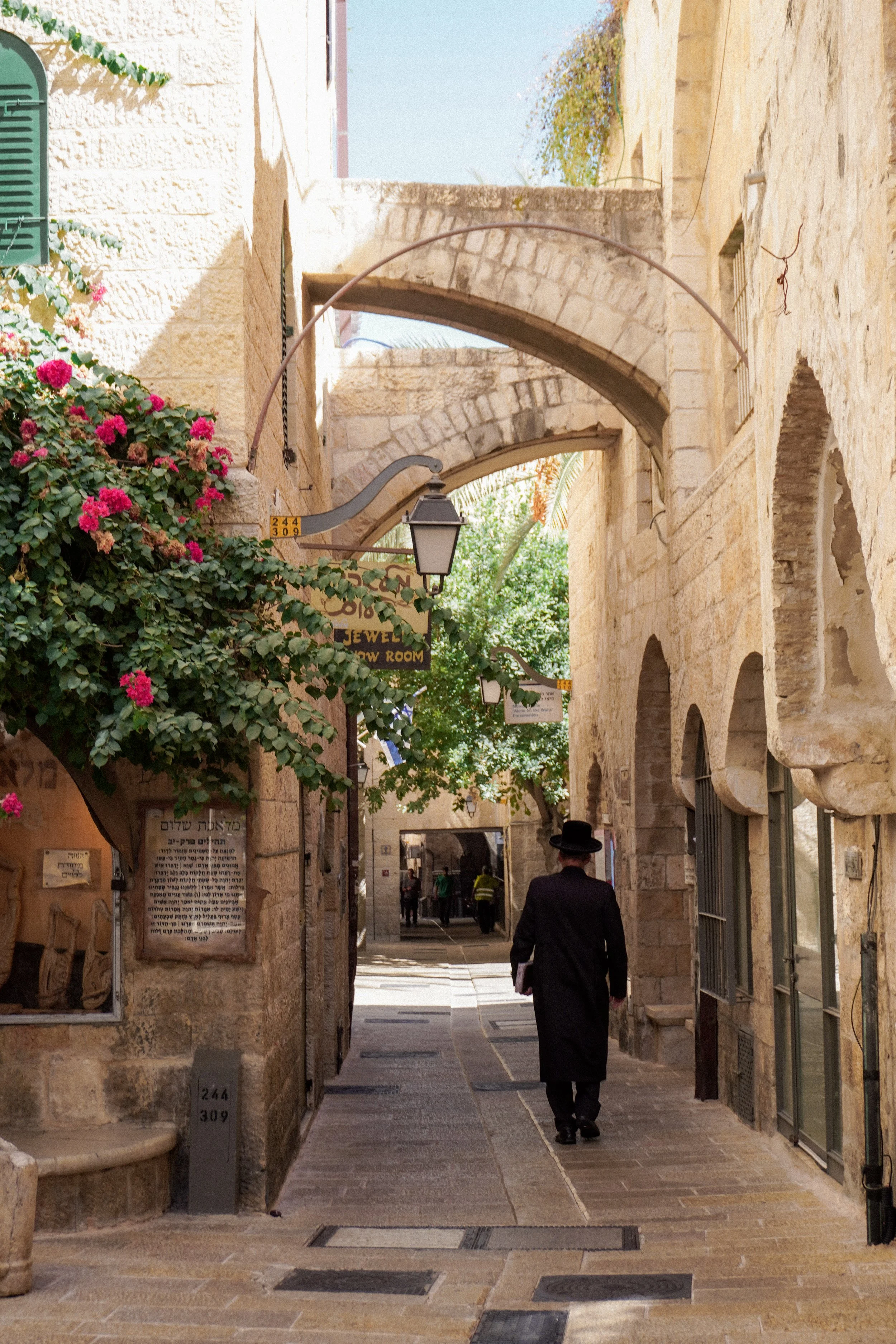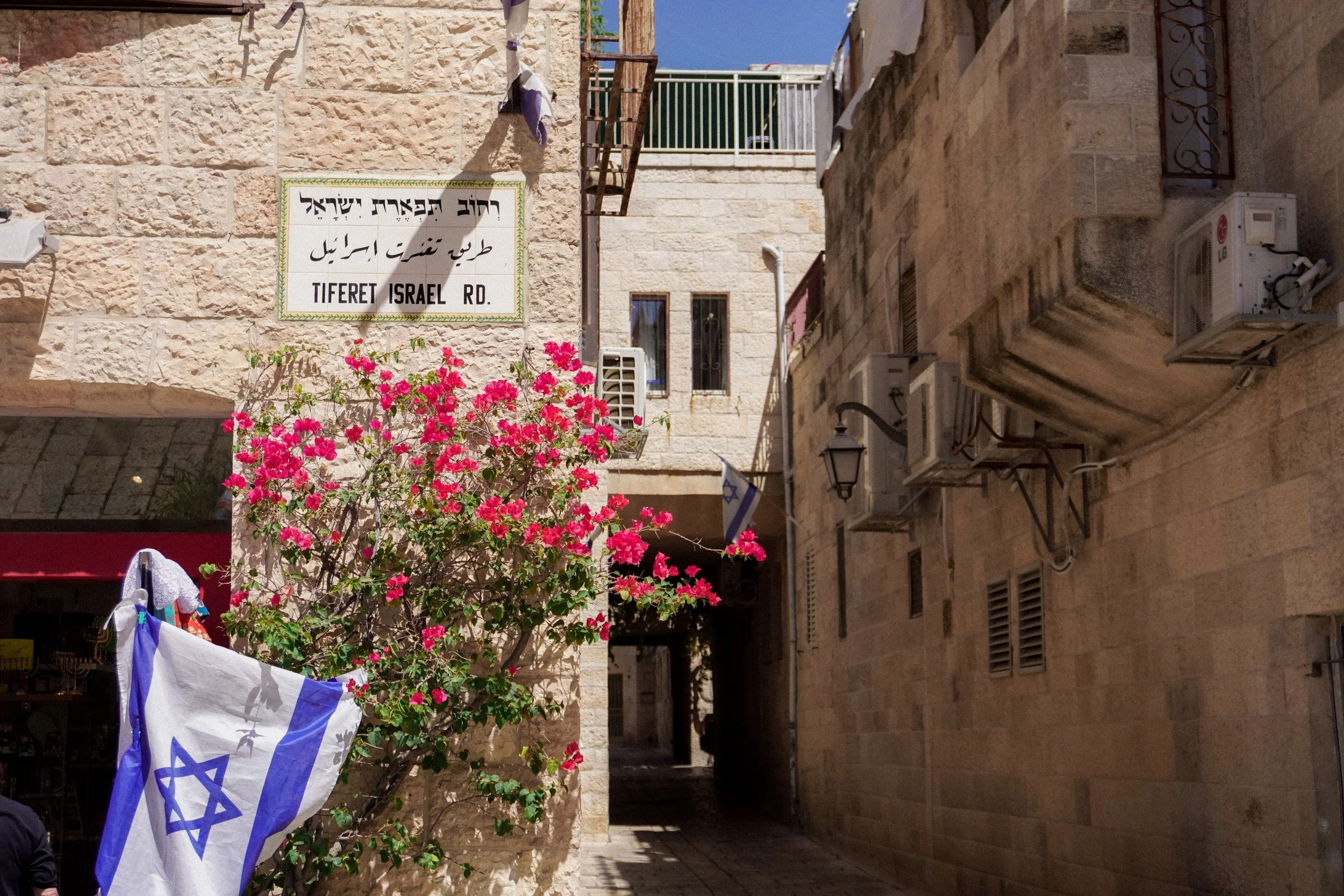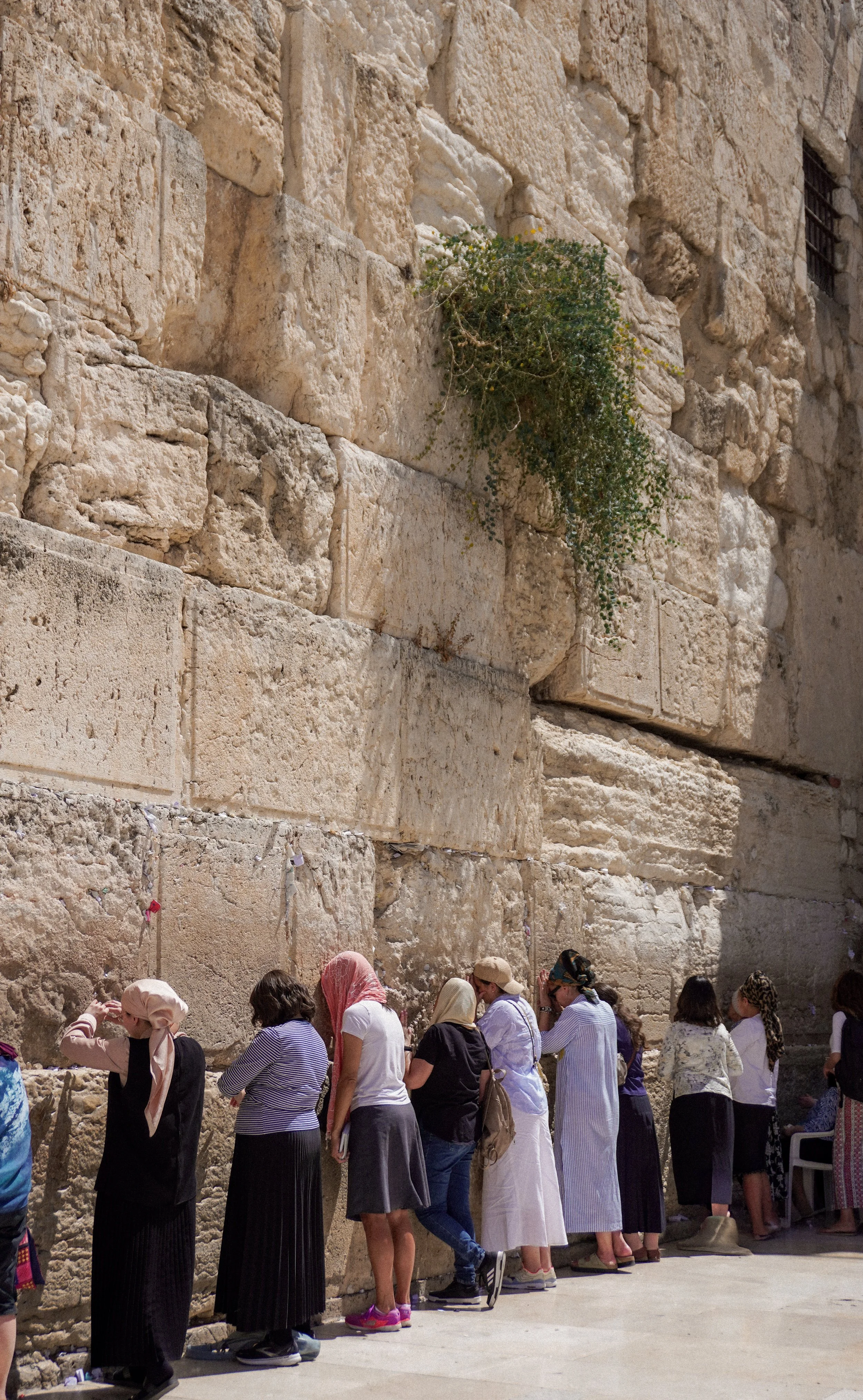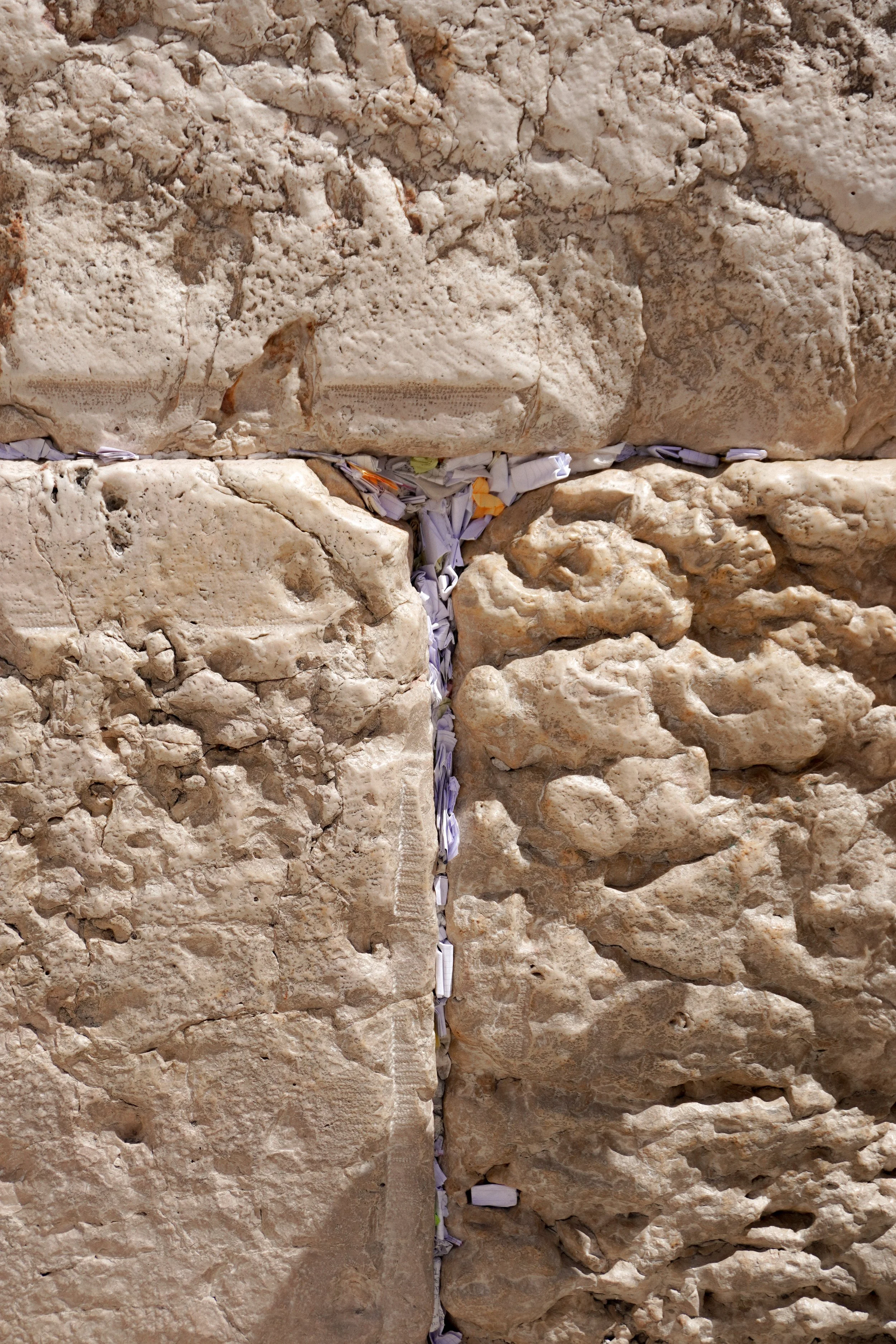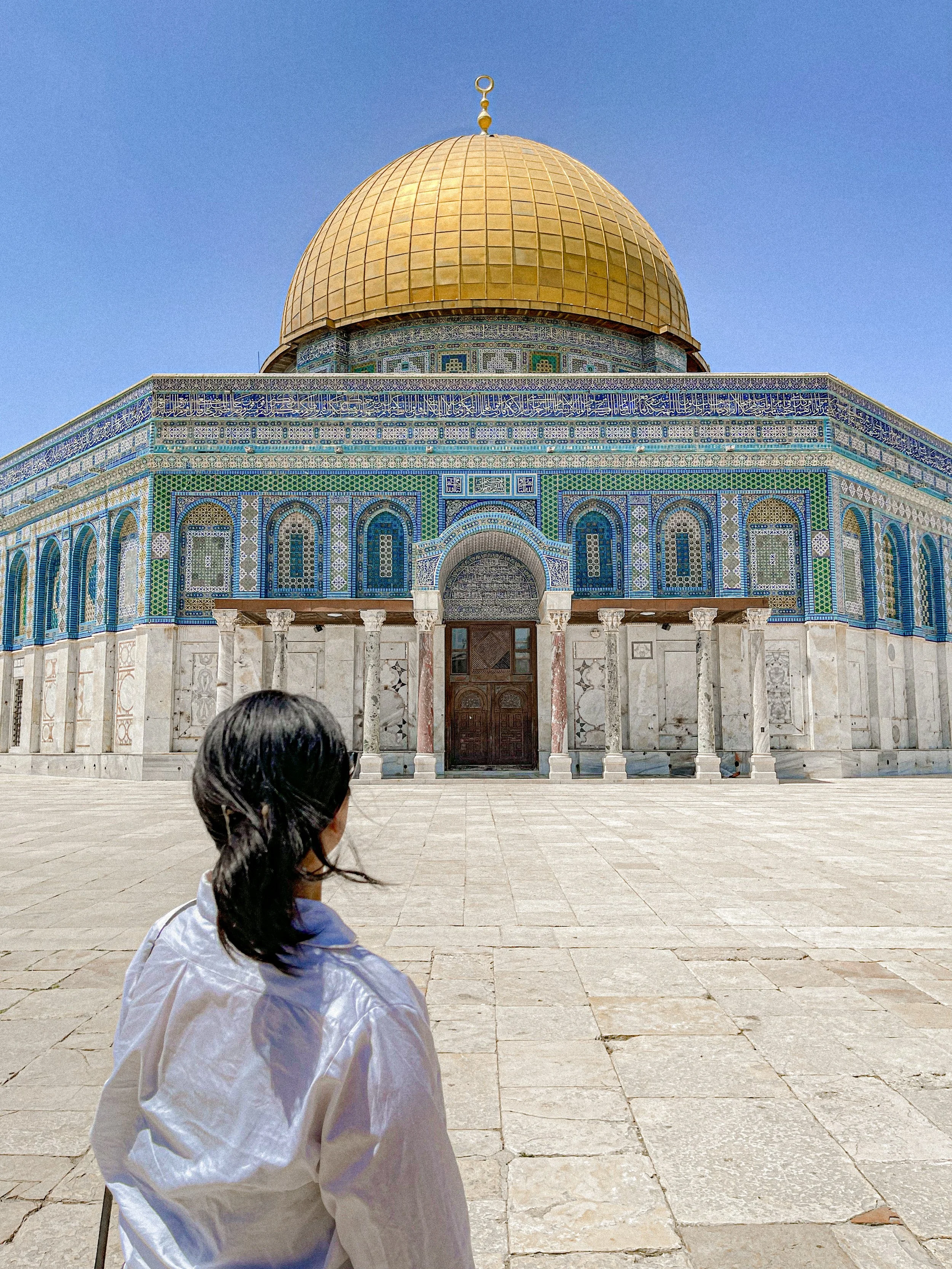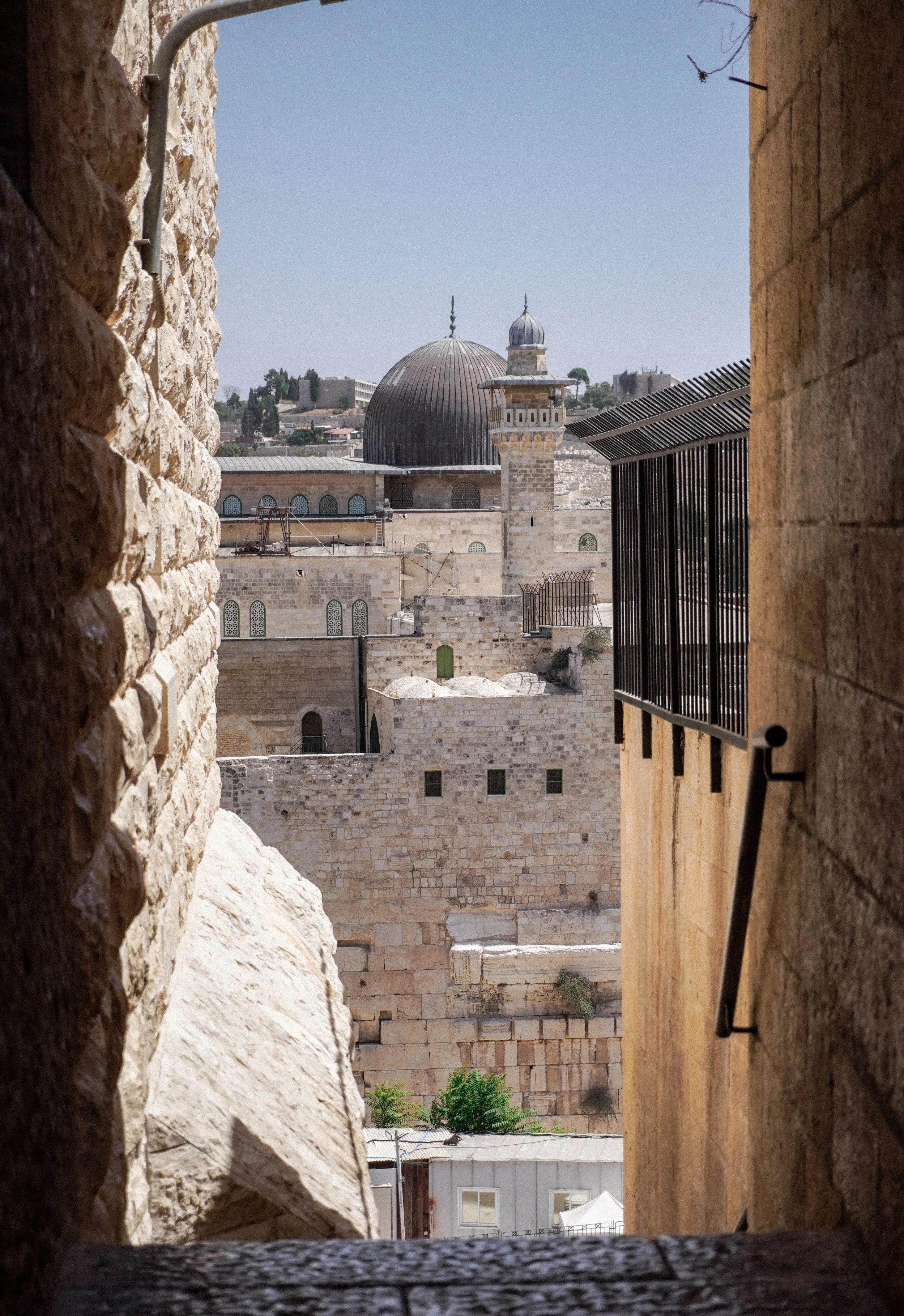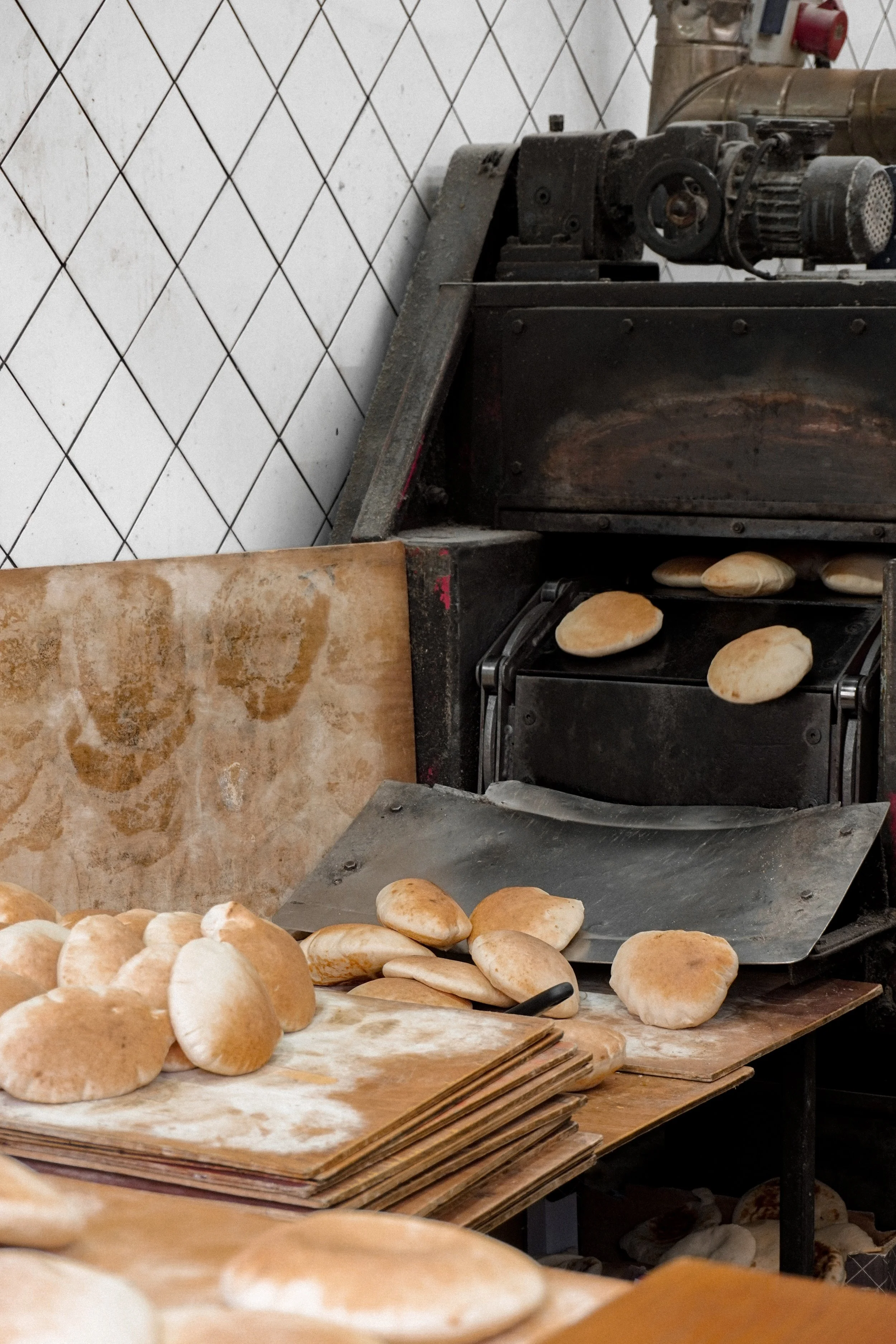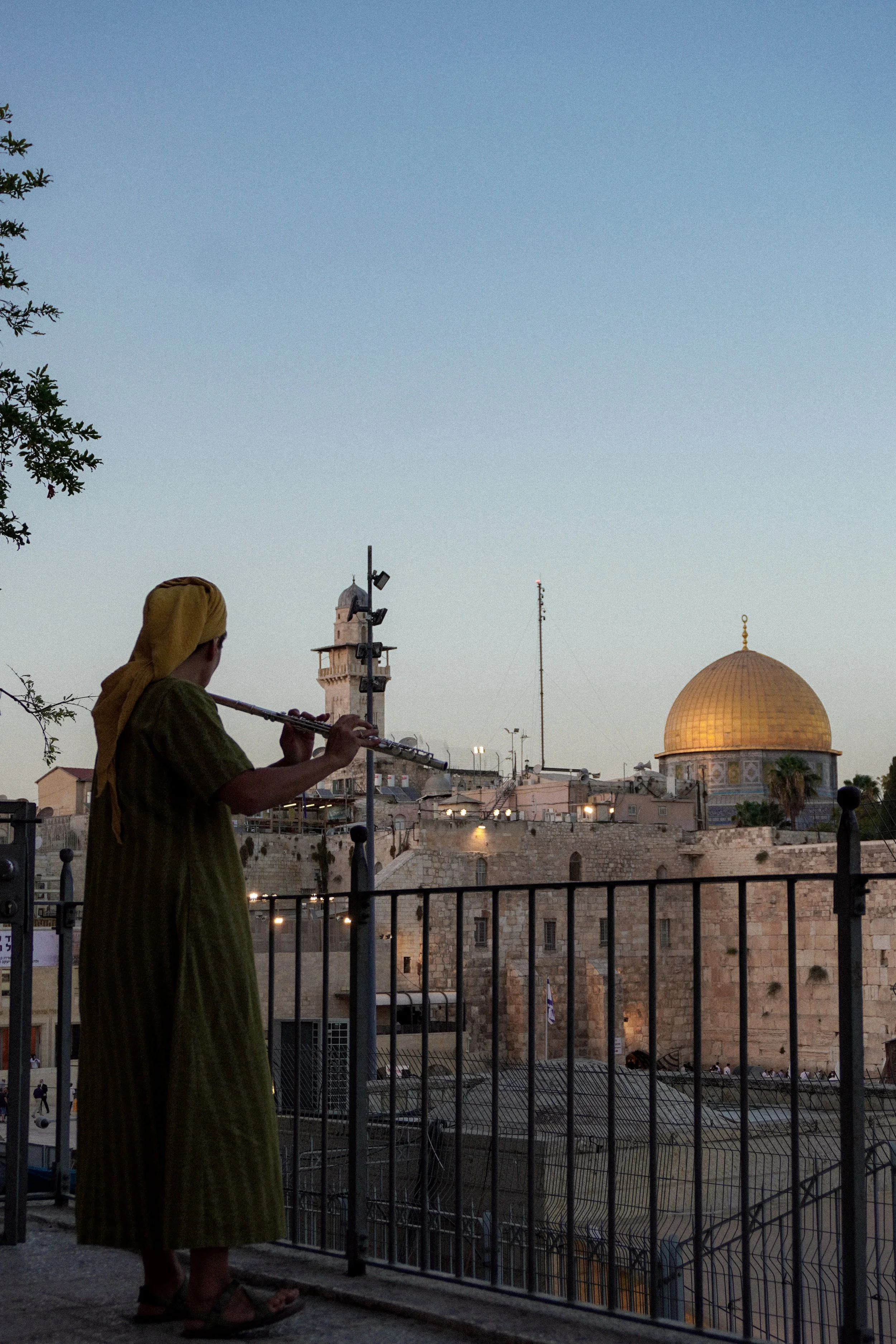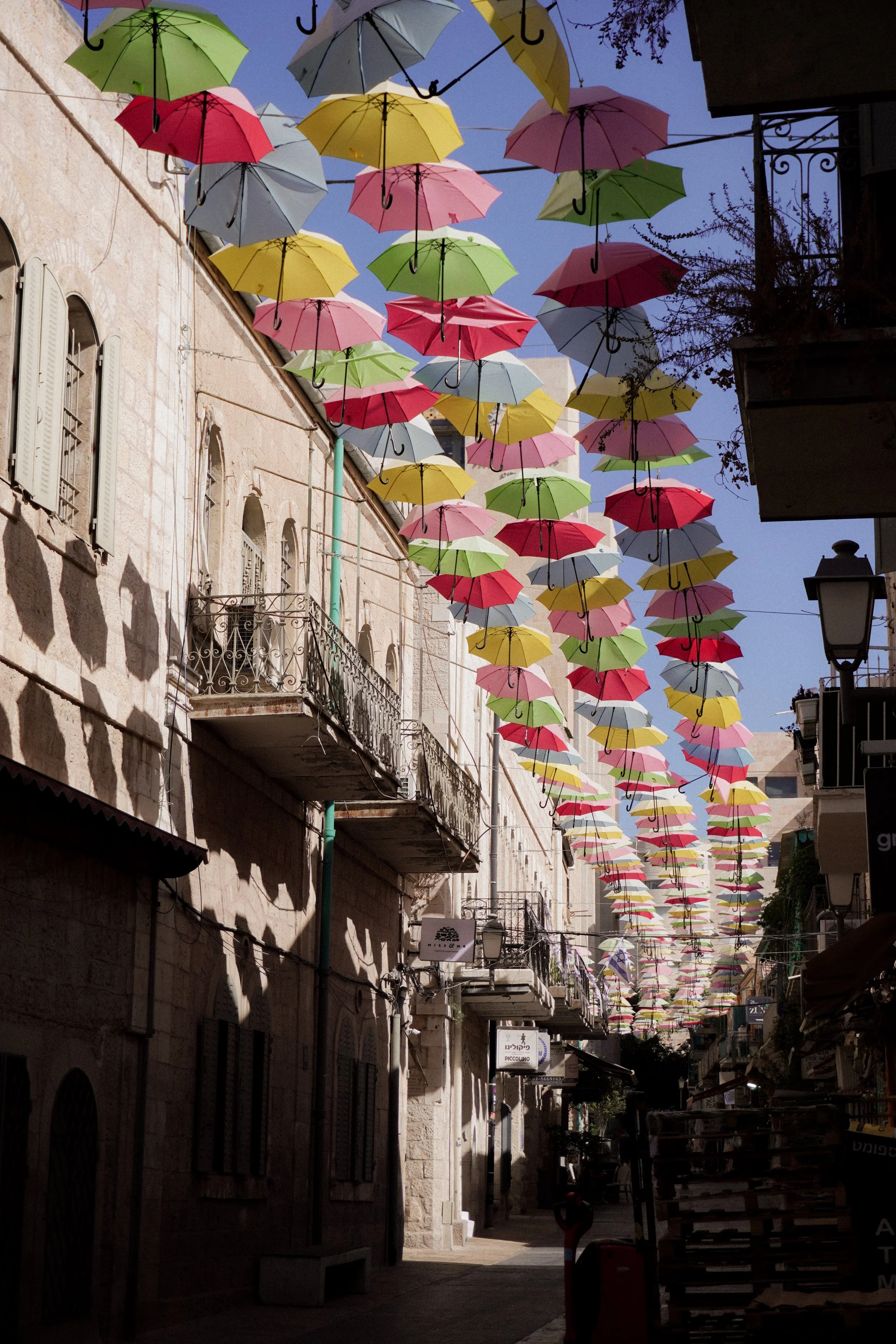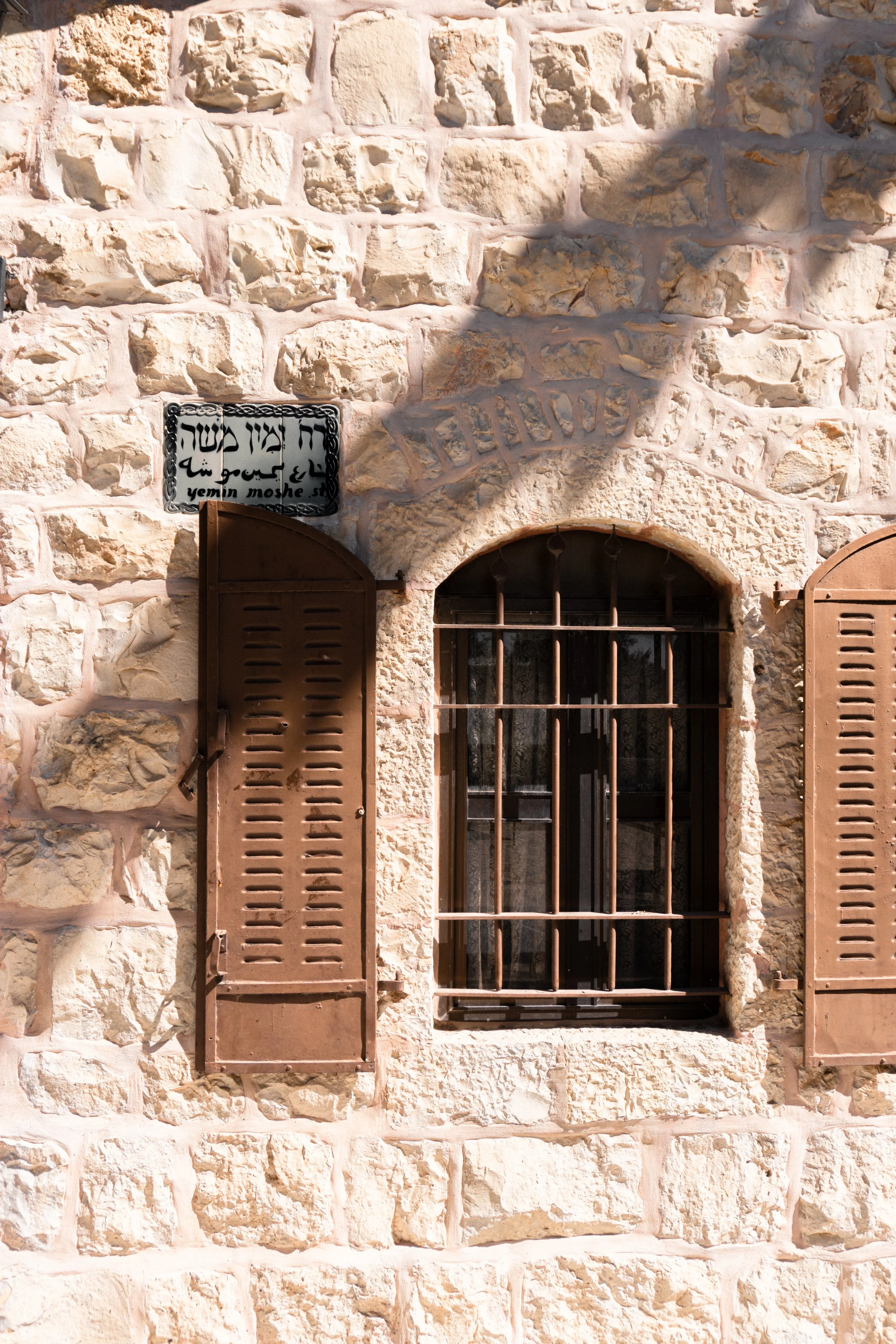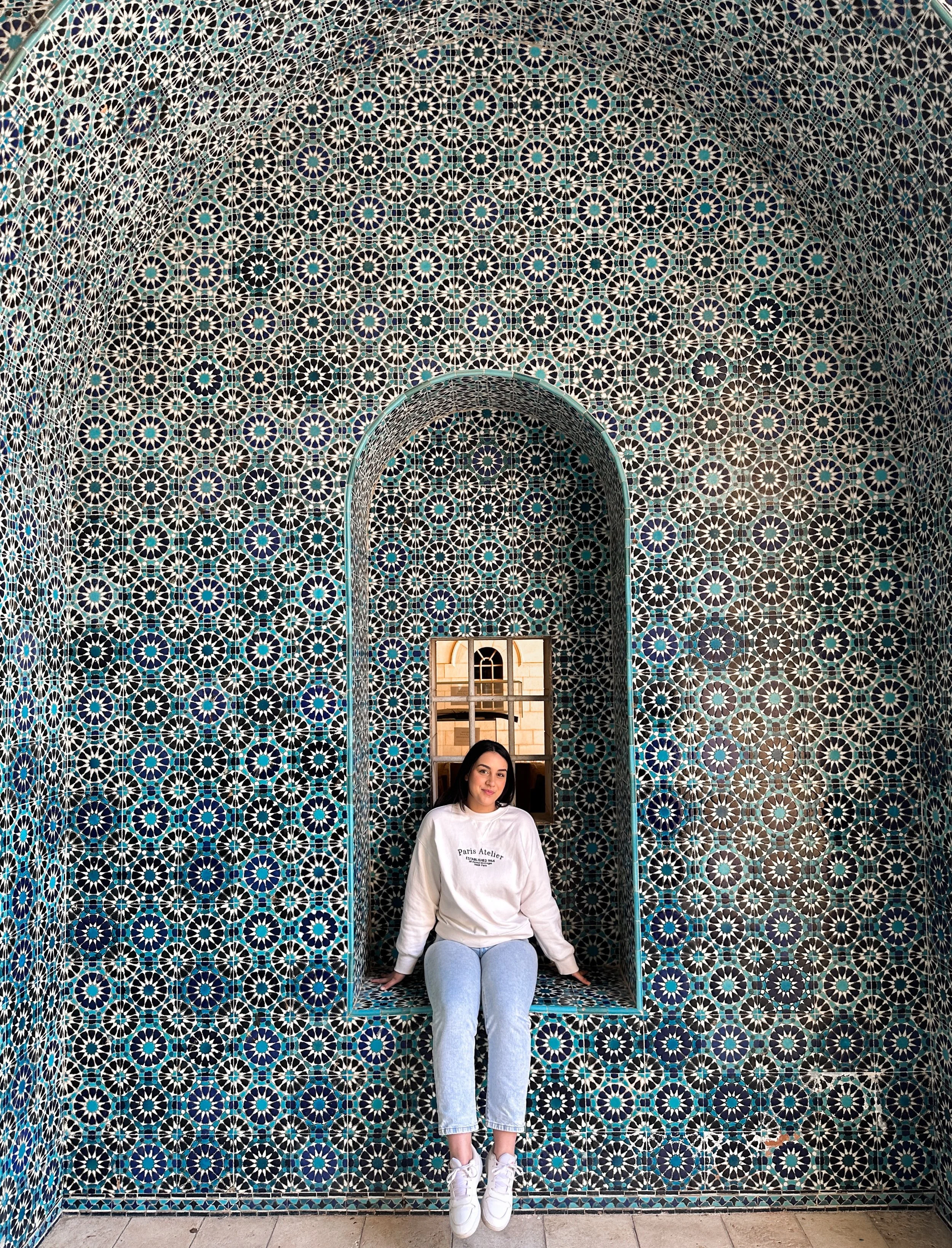The Old City of Jerusalem - A Comprehensive Travel Guide
There are some places you’ll visit that are just incomparable to anywhere else. For me, that place is Jerusalem. If there ever was a “melting pot” of culture, it’s Jerusalem - full of life and diversity, built upon thousands of years of history. Being considered the centre of the world and the sacred place of the three main religious movements for millennia, Jerusalem was conquered, besieged, captured and reclaimed over forty times throughout history. This means that Jerusalem's deep layers of history are not only figurative - but also literal, as the city has been torn down and rebuilt so many times over the years. Each time, being built again on the rubble that was left before. Jerusalem literally stands upon the ruins of its past.
In modern day, Jerusalem is a culturally, historically and religiously significant place to so many people. And as you walk through the labyrinth of its ancient streets, its beauty will leave you filled with wonder. No matter where you come from, your religious background or your worldview, there is something here for everyone - and I think that's what makes this city so special.
Having visited Jerusalem countless times over the years, l'll take you through everything you need to know for the Old City - the most interesting square kilometre in the world.
*Some of the links in this post are affiliate links. Purchasing through these links earns me a commission without costing you any extra - thank you for your support!
PLANNING YOUR TRIP TO THE OLD CITY OF JERUSALEM
GETTING TO JERUSALEM: The easiest way to get to Jerusalem is by flying into Tel Aviv (Ben Gurion Airport) and taking the train or a shuttle bus. If you’re travelling from Tel Aviv, the train is the best option. Parking is scarce in Jerusalem, so I would avoid driving if you can.
HOW LONG SHOULD I SPEND IN THE OLD CITY? The richness of Jerusalem's culture, and of course its historical significance, makes it difficult to fully experience in just a day or two. Ideally, plan to spend at least four days in Jerusalem with two days specifically dedicated to its Old City. If you're short on time, you can still experience the highlights in two or three days, bearing in mind that 48 hours would be the minimum to do justice to this extraordinary place, especially as you will be tired from all the walking you will do.
SAFETY: Israel is an extremely safe, Western country. My experience is that Jerusalem is safe for tourists - I even travelled here solo during the height of a war (and wider conflict within the Middle East), and I felt completely at ease. Perhaps it has to do something to do with the fact that Israel the only democratic country in the Middle East, or that the country has strong security measures to protect its civilians. That being said, you should always exercise the same cautions you would when travelling to any other destination. Be mindful of your belongings, keep your wits about you, be vigilant in crowded areas, and be respectful when visiting holy sites. There is a strong armed presence (security, police and military) in Jerusalem, which means that people are legally trained and equipped to respond in the event of an emergency. I have always felt just as safe, if not safer, in Jerusalem than I ever have in my home country of Australia.
WHAT TO WEAR IN JERUSALEM: I constantly hear people say you should dress conservatively when visiting Jerusalem. Truth is, there are no strict dress codes in Jerusalem. Wear whatever you’re comfortable in. I’ve worn a tank top and shorts here on multiple occasions. However, if you plan to visit religious sites (Western Wall, Church of the Holy Sepulchre, Temple Mount) or religious neighbourhoods, modest attire is required, so you will need to cover up. I find it’s easiest to dress in, and pack layers! I’ll explain more as we talk about specific landmarks soon.
SHABBAT: Sunday is the first day of the week in Israel, which means Saturday (Shabbat) the nation’s rest day. From sundown Friday until sundown Saturday, most things in Israel will be closed, including restaurants and public transport. This is especially true in Jerusalem as the population is more religiously observant. Take this into account when planning your itinerary, especially if you have a flight to catch. You don’t want to be caught out not being able to get a train or taxi!
ESSENTIALS TO PACK: Other than comfortable walking shoes, bring SPF and a refillable water bottle, particularly if you're exploring during the warmer months (May - September). Even though it can snow in Winter, the sun is strong here! For the girls, a light scarf can come in handy for covering your shoulders at religious sites.
EXPERIENCING THE OLD CITY OF JERUSALEM…
The first thing to understand about The Old City is that it is a walled city. The walls that surround the city today were built as fortifications in the early 1500's during the Ottoman Empire. Because of these fortifications, you have to enter the city through one of seven gates (we’ll talk more about where you’ll enter soon).
The Old City is divided into four quarters: the Jewish Quarter, Armenian Quarter, Christian Quarter and Muslim Quarter. A misconception I often hear is that the ‘quarters’ are used to segregate the people living in them based on ethnicity or religion, which is not true. The four quarters simply represent the different religious and ethnic groups that have lived in Jerusalem throughout history. While each quarter is mostly reflective of its corresponding description, you’ll find a blend of people living harmoniously all throughout the city.
Because of the tall fortifying walls, winding streets and amount of stairs within The Old City, it can be pretty easy to get lost. It’s easy to wander for a bit and end up in a different quarter - but you’ll get a vibe for which area you’re in based on the people and shops that surround you. The Muslim Quarter feels like you’re walking through an Arabic souk - with loud conversation, aromatics and bright tapestries. In the Jewish Quarter, you’ll see Orthodox Jews wearing bekishe coats as they head to the Kotel (Western Wall).
There’s also a fifth area of the City, The Temple Mount - originally home to the First and Second Jewish Temples, which now houses the iconic Dome of the Rock and Al-Aqsa Mosque.
One of the best things to do, and one of my highest recommendations for The Old City, is just to wander and get lost within the streets. It’s amazing to walk through the maze of streets and think of all the people who may have walked it before you. You can really spend a whole day just exploring, walking into shops and getting to know the people of The Old City.
MUST SEE PLACES IN THE OLD CITY OF JERUSALEM:
Here are all my must sees for the perfect trip to The Old City of Jerusalem:
JAFFA GATE
As I mentioned before, you will enter The Old City through one of seven gates. I recommend the Jaffa Gate (also known as the Yafo Gate). It’s the most popular pedestrian entrance as it’s the easiest to get to via public transport and is closest to the modern area of the city (West Jerusalem), which is where all the hotels are. The gate itself is also beautiful - so take a moment to look at the elaborate inscriptions and small holes within the stone tiles, and learn about their stories.
As you enter, there are tourist information stands and meeting points for tour groups. You will also be able to buy tickets for the Rampart’s Walk at this entrance.
Tip: Exercise some caution here. As this is where most tourists enter and The Old City tours start, it’s a common spot for illegal guides/scammers. These scammers will offer you a tour or tell you they know somewhere that has a beautiful view for you to take pictures, but will then take you into shops and pressure you to buy something. There are, however, some really good tour guides that offer free tours of the Old City from the Jaffa Gate. Know that all licensed tour guides must wear their registration tag, and you can ask to see it before proceeding with a tour.
RAMPARTS WALK
The Ramparts Walk is fantastic. You will get to walk on The Old City walls, see amazing views and get a totally different perspective of Jerusalem from above. It’s a great way to get to know the city and understand each Quarter, particularly before you start exploring it on the ground level. There are two separate walks: a north side and a south side. The entrance for both is at the Jaffa Gate, and you can exit anywhere along the walk. I did the south side walk and exited at the Western Wall. For more information about the Ramparts Walk, read this article.
DAVIDSON ARCHAELOGICAL PARK
The Davidson Archaeological Park provides a fascinating glimpse into Biblical times. Standing amongst the Herodian ruins and walking the steps that people once used to ascend to the First Temple thousands of years ago is unmatched. Among the ruins, you will find ancient mikvahs (ritual baths) that the Jews used to cleanse themselves before visiting the Temple. The museum also offers displays and artefacts that provide context to the ruins you'll encounter. This is undoubtedly one of Jerusalem’s most interesting sites. Consider joining a guided tour here for deeper insights into its history.
THE WESTERN WALL
The Western Wall (or “Kotel” in Hebrew) is a significant place for Jews. It is the remains of the wall which surrounds the Temple Mount complex, the site of the First and Second Temples of Jerusalem (destroyed in 586 BC and 70 AD, respectively) - the holiest place in Judaism. As the Temple Mount now houses the Dome of the Rock and Al Aqsa Mosque, the Western Wall is the closest place that Jews can pray to their most sacred site.
You can see the Wall from the plaza, but if you want to get up close, there are two prayer sections - one for men and one for women. If you want to enter the prayer section you must be dressed appropriately. For women, this means having your knees, shoulders and elbows covered. For men, this means having your head covered. And not to worry, they do have kippahs you can borrow - I know it’s not exactly a wardrobe staple for most people!
A common practice you will see at the Wall is people placing slips of paper containing written prayers or wishes into the cracks of the stone wall. Bring a pen and paper so you can place your own prayer in the wall. It’s also customary to walk backwards as you exit so not to turn your back to the wall.
No matter where you come from, it’s impossible not to feel touched by the emotion here. I stand in the middle of it all - not a Jew, not a Muslim, nor a Christian - just a secular girl from Australia. But somehow I feel so at peace and connected with the vast spirituality and emotion this place holds, I can’t help but to cry.
You can only see 70 meters of the Wall’s length when standing in the Western Wall Plaza today, but the wall actually extends much further underground. This is because the Old City of Jerusalem was destroyed many times throughout history, each time being rebuilt on top of the rubble. If this intrigues you and you’d like to learn more about the history of the Western Wall or have the experience of seeing the hidden parts of the wall, then I highly recommend an underground Western Wall tour. I have done both The Great Stone Tour and The Great Bridge Tour with The Western Wall Heritage Foundation and loved every minute. If you only have time for one of these tours, I’d say go with the Great Stone Tour.
TEMPLE MOUNT & DOME OF THE ROCK
On top of the Temple Mount sits the The Dome of The Rock. It is an Islamic shrine which is easily recognisable from its gold dome. The shrine was built in about 690 AD and holds, just as the name suggests, the rock that Muslims believe Muhammed ascended to heaven from. Non Muslims can enter the Temple Mount area, but not the shrine itself. This place is an incredible sight to see with your own eyes and I truly think it is one of the most spectacular buildings in the world.
The entrance to the Temple Mount is on the outside of the Western Wall next to the Dung Gate. As you enter, you will be required to go through security. The Temple Mount opening hours (for non Muslims) are: Monday through to Thursday 7:30 am – 10:30 am and 12:30 pm – 1:30 pm in the winter or 8:30 am – 11:30 am and 1:30 pm – 2:30 pm in the summer.
Although the Temple Mount is within Israeli territory, it is an Islamic holy site. As such, the Israeli government allows the Jordanian Waqf to manage this area. The Waqf guards that man the Temple Mount are extremely strict - and I feel that to be a stark contrast from the rest of Jerusalem’s Old City. They have modesty guards at the entrance, so make sure your shoulders, knees and chest are fully covered or you won’t be allowed to enter. I have observed that the standard for dress is inconsistent. The modesty guards make some people cover up more than others, even when they’re wearing exactly the same thing. Just something worth keeping in mind.
You are allowed to take pictures here but be mindful when posing for photos - don’t put your hands up in the air or make gestures such as peace signs. Also, don’t pray here if you aren’t Muslim. I’ve seen others do this and if the Waqf see you, they will threaten to remove you. Be respectful and just enjoy the view and historical significance of this place because seriously… wow. No matter where you come from or your beliefs, it really is so impressive to see this place in person.
If you don’t have time to visit the Temple Mount, the views of the Dome of The Rock are best seen from the Austrian Hospice rooftop. Insider tip - their apple strudel is fantastic (thank me later).
VIA DOLAROSA
The Via Dolarosa is believed to be the path Jesus took while carrying the cross to his crucifixion. In modern day, the cobblestone road is lined with shopfronts and bustling markets, with 14 stations along the path which offer visitors a spiritual and educational experience when walking this route. The route starts at the Lion’s Gate and ends at the Church of the Holy Sepulchre. The route can get quite busy - so it’s advised to start early in the morning to avoid the crowds. Each station is marked on the wall with a Roman numeral plaque, but they’re quite small so they can be easy to miss, especially given the modern infrastructure. I’d say that if you’re wanting to get the full experience, it would be best to stick to a map or join a guided tour. While I have not done the Via Dolarosa in its entirety myself, I know that it is a deeply moving experience for so many, allowing them to connect with Christianity in such a tangible way.
CHURCH OF THE HOLY SEPULCHRE
The Church of the Holy Sepulchre is the final station on the Via Dolarosa and is located in the Christian Quarter. It is where many Christians believe Jesus was crucified, buried and ressurected. The church itself is gorgeous. I could spend ages admiring the dome ceiling, murals and paintings in here. You can touch what is believed to be the Stone of Annointion and go inside the Sepulchre, where it is said Jesus was buried and subsequently resurrected. For many, this is an extremely spiritual and moving place and I find it incredible to witness people experience it in their own way. As it is a church, make sure to cover your shoulders here.
MUSLIM QUARTER
The Muslim Quarter is the largest of the four quarters, constituting over a third of the Old City. It is abundant with shops, spices and diverse architecture. You can enter the Muslim Quarter through the Damascus Gate (which is so impressive to view from outside of the city) or the Lion’s Gate - but you’ll likely find yourself here as you weave your way through the streets of the Old City. While it’s called the Muslim Quarter, there are many sites here that are also significant to Christians and Jews; including several stations of the Via Dolarosa.
This is a fantastic area to wander in, particularly in the shuk (market), which is arguably the Muslim Quarter’s focal point. And although many of the shops are marketed to tourists, the further in you venture, the more authentic your experience will be. Aside from the vibrant market stalls that line the bustling, narrow streets of the Quarter, you can also find significant Biblical sites such as the Pools of Bethesda and a Greek Orthodox chapel believed to be the Birthplace of Mary. You will also find the “small Western Wall” here, at the end of Bab al-Hadad St, a smaller exposed section of the Western Wall.
ARMENIAN QUARTER + DORMITON ABBEY
The Jewish, Christian and Muslim Quarter all make sense, but you’re probably wondering why there is also an Armenian Quarter.
Armenians received their own quarter of the Old City because they were the first people to become Christian, and have been making pilgrimage to Jerusalem ever since 301 AD. Since then, there has always been a small Armenian population in Jerusalem. When the Crusaders came to Jerusalem, they defeated the Jews and Muslims - but left the Armenian community untouched, instead marrying the Armenian women. Most of the Armenians who live in Israel today are not descendants of Armenian pilgrims or Crusaders, but are actually refugees from the Armenian genocide. Throughout the Quarter, you may see posters calling for the recognition of the Armenian genocide.
As the Armenian Quarter is so small, there’s not a whole lot to see, but the Dormiton Abbey (Hagia Maria), is just outside of the Quarter near the Zion Gate. This Catholic church holds significance as it is said to be the place where Mary died. Both the interior and exterior of this building are stunning, and certainly worth a visit while you’re here.
Where to eat in the Old City of Jerusalem
I feel like you can never go wrong with food in Israel - even the most average of restaurants are still good! But as far as my favourite places to eat in The Old City, I would recommend The Rova Coffee House (amazing pastries, coffee and matcha), the Austrian Hospice (you can’t beat its apple strudel and view of the Temple Mount) and Teta Cafe (a tiny gem serving up delicious, classic Israeli food so make sure you come hungry).
Where to next?
I have a full guide to Jerusalem where I detail all the best places beyond The Old City currently in the works. Until then, here’s some other places I’d recommend adding to your itinerary:
JAFFA STREET: After visiting the Old City, you’ll want to continue on to West Jerusalem, which is the more modern and metropolitan area of Jerusalem. The heart of this area, often known as the “New City”, is Jaffa Street. It’s where the Jerusalem light rail runs and it is always busy with plenty of things to see, live music and places to shop.
SHUK MACHNE YEHUDA: If I could eat every one of my meals here, I would. Welcome to the biggest market in Jerusalem - abundant with fresh produce, baked goods, meats, cheeses and spices. It seems like there’s no end to the falafel, shawarma, fresh juice, knafeh, halva or Jerusalem mixed grill stands, cafes and restaurants here. With over 250 vendors, the vast amount of food options are overwhelming - you just have to pick somewhere and go for it, but know that whatever you choose will always be phenomenal. Shuk Machne Yehuda is one of my favourite places in Israel as it's so vibrant - the bustle of people and the friendly interactions I always seem to have here warm my heart.
MOUNT OF OLIVES: Upon this mountain ridge in East Jerusalem is a site that holds significance to both Jews and Christians. Lined with olive trees, it’s home to an ancient Jewish cemetery. This is also where all the notes from the Western Wall are buried (Jewish law prohibits them from being destroyed). The late afternoons here are gorgeous and watching the sky burst with oranges as the sun sets behind the Old City of Jerusalem is a sight you must see at least once in your life.
YAD VASHEM: Israel’s memorial to the victims of the Holocaust. This museum is dedicated to preserving the memory of those who were murdered and echoing the stories of survivors. It’s 2025 as I write this, and for the past year and a half, antisemitism has been at its highest prevelance since the Holocaust. I strongly encourage you to visit Yad Vashem and see why keeping the promise of never again is so important.
ROCKEFELLER ARCHAEOLOGICAL MUSEUM: This museum seems to be a little less known, but it’s one you won’t want to miss. They have a vast collection of ancient artefacts that were uncovered during excavations in the 1920s-1930s. I learnt so much here - guaranteed you will too! Plus, you can’t beat the free entry.
Thank you!
There you have it. My tried and tested recommendations for the perfect trip in Jerusalem. If you have any questions, please comment below and I will do my best to answer!
I hope your visit to Jerusalem is as magical and life changing as all of mine have been!
Until next time,
Erika x
P.S… make sure you’re following me on Instagram and TikTok to keep up with my travels in Jerusalem and beyond!


